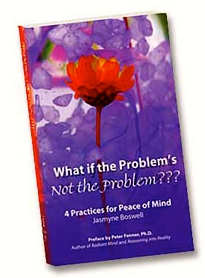Developing Memorable Characters – for a Memoir and a Novel
Writing characters in a memoir and a novel involves different approaches, each with unique challenges and considerations. In a memoir your goal is to authentically and ethically portray real people and experiences, balancing accuracy with emotional honesty. In a novel, it involves creating fiction characters and imagined scenarios.
Memoir:
Your characters are based on real characters that are drawn from the authors, life experience and interactions. This means:
Accuracy: you must portray people as truthfully, as possible, respecting their real life complexities.
Ethical considerations: Consider the impact of your portrayal on real individuals. This includes respecting the privacy and acknowledging their perspectives.
Memory and perspective:
Your recollections may be subjective. Be honest about your perspective and the limitations of your memory. You use reflection, the true evolution of people over time based on real events and experiences.
Limitations: real people may not have dramatic arcs or clear resolutions, which can challenge storytellers.
Novel:
Characters in a novel are fictional, created from the authors imagination this allows for:
Creative freedom: You can shape characters to fit the narrative needs without constraints.
Archetypes and tropes: While avoiding cliché, you can use archetypes to create familiarity.
Backstory creation: You have the liberty to invent detailed back stories, motivations and traits.
Plot driven changes: Their evolution can be tightly linked to the plot, ensuring a satisfying narrative, progression.
Crafting Characters involves a balance of imagination and technique. By creating multidimensional characters with distinct voices, clear, motivations, and relatable flaws, you can breathe life into your character and captivate your readers. Remember, your characters are not just participants in your plot. They are the emotional core of your narrative. Treat them with the depth and complexity they deserve, and your readers will be deeply invested in their journeys.
Develop distinct voices use dialogue: How do they speak? What words do they choose? Consider their education of bringing in personality what are their inner thoughts like. This provides insight into their true feelings and motivations
Show don’t tell: Instead of explicitly stating your characters traits show them through actions and interactions. For example, instead of saying Kathy was brave, saying Kathy stepped into the dark alley, her heart pounding, but her steps unwavering.
Show conflict: Character’s internal and external conflicts, drive character, drive development and plot progression. Internal conflicts might include moral, dilemmas or emotional struggles while external conflict can involve physical obstacles or antagonistic forces. Balance, strengths, and weaknesses. Perfect characters are boring. Give your characters a mix of strengths and weaknesses. A character who is brilliant, but socially, awkward or incredibly strong but emotionally fragile is more engaging and relatable. Characters emotions and experience should be relatable, themes of love, loss, ambition and fear are universal. Tap into these to create emotional connection for your reader.
Show Relationships: The way characters interact with others reveals a lot about their nature. Relationships can add depth and dimension. Consider friendships. Who do they trust? Romantic relationships. what do they seek in a partner? Rivalries. Who opposes them and why?
Goals: Characters should have clear compelling goals. Their goals drive their actions and decisions. What do they stand to gain or lose? This creates tension and engagement.
Character evolution: This growth can be positive or negative, but it should be believable and learned through their experience and conflict.
Think of the character-driven books or films you’ve enjoyed and still remember. Consider what you found interesting and compelling about those stories. You will probably notice many of the above points included in what kept you engaged.
As you can see, while there are distinct differences to consider in character development when writing a memoir and a novel, they share many common elements. In both cases, characters must experience growth over the course of the story. And the beauty, intimacy, and vibrancy lie in the details.
Enjoy!
Jasmyne


